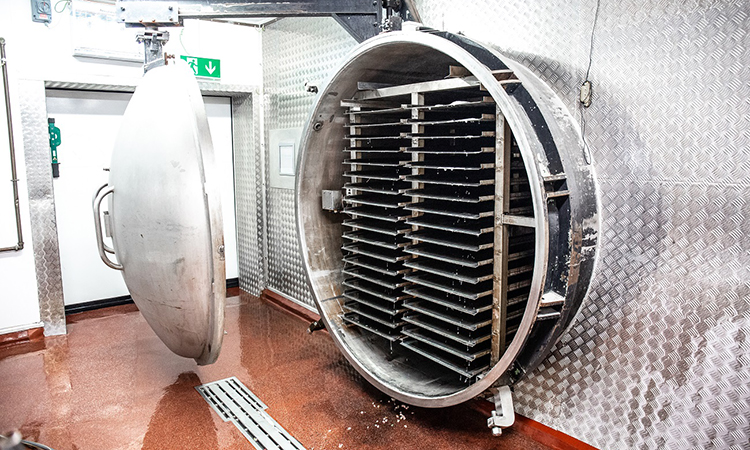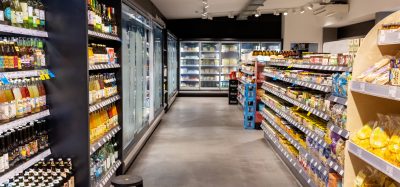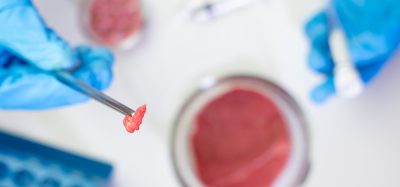Could freeze drying heat up the probiotic manufacturing process?
- Like
- Digg
- Del
- Tumblr
- VKontakte
- Buffer
- Love This
- Odnoklassniki
- Meneame
- Blogger
- Amazon
- Yahoo Mail
- Gmail
- AOL
- Newsvine
- HackerNews
- Evernote
- MySpace
- Mail.ru
- Viadeo
- Line
- Comments
- Yummly
- SMS
- Viber
- Telegram
- Subscribe
- Skype
- Facebook Messenger
- Kakao
- LiveJournal
- Yammer
- Edgar
- Fintel
- Mix
- Instapaper
- Copy Link
Posted: 8 January 2021 | Joshua Minchin (New Food) | No comments yet
With demand for probiotic and prebiotics apparently still rising, new freeze-drying technology could provide the key to more efficient and sustainable production.


Freeze drying technology can maintain the viability of probiotics and prebiotics. Credit: European Freeze Dry
With health at the forefront of everybody’s minds at the moment, the market for dietary supplements such as probiotics and prebiotics has continued to grow. The use of freeze drying in the production of probiotics and prebiotics is thought by European Freeze Dry to be a key method in ensuring supply keeps up with demand.
What are probiotics and prebiotics?
Essentially, probiotics are live bacteria that are believed by many to provide health benefits, including improved gut health. Prebiotics are fibres found in food that humans are unable to break down, which probiotic bacteria feed on. Scientific knowledge of probiotics and prebiotics has grown to a new level, while public consciousness of the health benefits that these products can bring, particularly in promoting good gut and intestinal health, continues to raise awareness of the benefits across the world.
Consumers are also becoming more accustomed to seeing live probiotics such as kefir, kombucha and sauerkraut on supermarket shelves, alongside tablets and capsules.
What is freeze drying technology?
Freeze drying technology has evolved since it was first used as a method to dry vegetables and meats in South American mountains more than 100 years ago.
The act of freeze-drying involves taking a frozen probiotic (in this case) and gently applying heat to the raw ingredient. During the process, a deep vacuum is applied, and under these conditions the ice leaves the product as a vapour trail which is then captured on an ice condenser within the freeze drier.
It typically takes between 24 to 72 hours to complete the process (product dependent), and is carried out in a set of ‘chambers’, which can be controlled at various temperatures, pressures and time schedules depending on specific product requirements.
Over the course of (up to) 72 hours, European Freeze Dry says the product dries out while remaining viable as a healthy culture. This leaves the final product structurally and nutritionally stable, maintaining all the health, digestive and intestinal benefits of the original product for several years.
“The complex and subtle process can vary in technical details, requiring our expert teams to identify the specifications of the micro-organisms and protecting the viability of the cultures throughout the process, by applying gentle heat and pressure to the product as it dries,” said Poul Andersen from European Freeze Dry. “Compared to more aggressive drying methods such as spray drying or air drying, freeze drying methods are proven to retain the purity of the product, even when they are ground down into a powder.”
The result, according to European Freeze Dry, is a 100 percent natural freeze-dried product, which retains all the benefits of the raw culture. From there, it can be supplied as a stable supplement or ground down into a powder which can be inserted into tablets.
For probiotic producers, that means live cultures can have an extended lifespan, reducing the possibility of waste and increasing sustainability. European Freeze Dry says the final product can packaged into a supplement tablet which can be supplied as it is, or added into natural products, such as yoghurt, milk or snacks such as cereal bars, or plant-based dairy drinks.
Related topics
Equipment, Frozen Foods, Ingredients, Processing, Shelf life, Supply chain, Sustainability, Technology & Innovation








